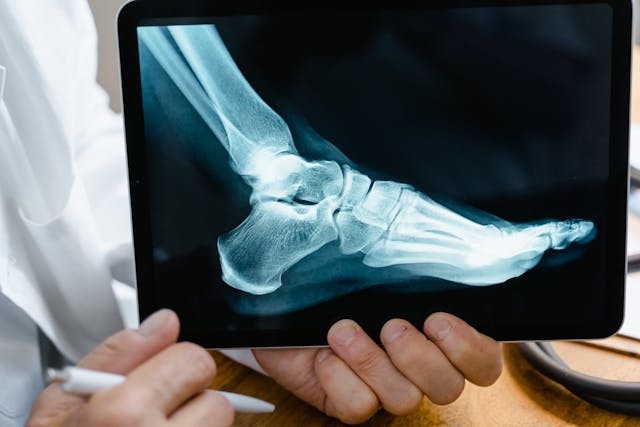Introduction
Cardiovascular disease (CVD) remains a leading cause of morbidity and mortality globally. While advancements in preventative care and acute management have improved outcomes, a significant portion of CVD-related complications stem from underlying vascular dysfunction. This is where the specialized field of vascular medicine plays a crucial role. Vascular medicine encompasses the diagnosis, treatment, and prevention of diseases affecting the arteries, veins, and lymphatic vessels. Its focus on addressing the root causes of vascular dysfunction translates to significant improvements in overall cardiovascular health and patient outcomes. Understanding the intricate role vascular medicine plays in this complex landscape is essential for optimizing cardiovascular care.
1. Diagnosing and Managing Peripheral Artery Disease (PAD)
Peripheral artery disease (PAD), characterized by atherosclerosis in the peripheral arteries, is a prevalent and often underdiagnosed condition. Early detection is critical as PAD significantly increases the risk of cardiovascular events, including myocardial infarction and stroke. Vascular specialists employ advanced imaging techniques like ankle-brachial index (ABI) measurements, ultrasound, and CT angiography to accurately diagnose the extent and severity of arterial blockage. This precise diagnostic approach allows for tailored treatment strategies, ranging from lifestyle modifications (diet, exercise, smoking cessation) to medical therapies (antiplatelet agents, statins) and, when necessary, interventional procedures such as angioplasty and stenting to restore blood flow.
The management of PAD goes beyond simply addressing the peripheral arterial obstruction. Vascular medicine specialists meticulously assess the overall cardiovascular risk profile of each patient, implementing aggressive risk factor modification strategies to prevent future cardiovascular events. This holistic approach ensures optimal long-term outcomes and reduces the significant morbidity and mortality associated with PAD. Furthermore, ongoing monitoring and close follow-up are crucial to detect and manage any complications, ensuring timely interventions when required.
2. The Critical Role in Deep Vein Thrombosis (DVT) and Pulmonary Embolism (PE)
Deep vein thrombosis (DVT) and pulmonary embolism (PE) represent a significant threat to cardiovascular health, often arising from venous insufficiency. Vascular specialists are pivotal in diagnosing these potentially life-threatening conditions through clinical evaluation, blood tests (D-dimer), and advanced imaging such as ultrasound and CT pulmonary angiography. Prompt diagnosis is essential, as early treatment with anticoagulation significantly reduces the risk of complications, including recurrent DVT, PE, and post-thrombotic syndrome.
Management of DVT and PE requires a multidisciplinary approach involving hematologists and vascular surgeons in addition to vascular medicine specialists. The choice of anticoagulation therapy is carefully individualized based on the patient’s risk factors, comorbidities, and the severity of the condition. Beyond acute management, long-term anticoagulation strategies and ongoing monitoring are essential to prevent recurrence and minimize the risk of future complications. Furthermore, strategies aimed at preventing DVT formation, especially in high-risk patients (e.g., post-surgery, prolonged immobilization), are crucial aspects of vascular medicine’s contribution to improved patient outcomes.
3. Aortic Disease Management: Prevention and Intervention
Aortic aneurysms and dissections are life-threatening conditions requiring specialized expertise in diagnosis and management. Vascular medicine specialists utilize advanced imaging techniques, such as CT angiography and MRI, to accurately assess the size, location, and growth rate of aortic aneurysms. This allows for timely intervention, either through close monitoring (smaller aneurysms) or surgical or endovascular repair (larger, rapidly expanding aneurysms). Early intervention is crucial to prevent catastrophic rupture, a potentially fatal event.
The management of aortic disease extends beyond surgical repair. Vascular specialists play a key role in pre-operative and post-operative care, ensuring optimal patient preparation and minimizing complications. This includes careful assessment and management of associated cardiovascular risk factors, optimizing medication regimens, and providing comprehensive post-operative rehabilitation guidance. Furthermore, genetic screening and family history assessment are vital components of the management plan, as some forms of aortic disease have a hereditary component.
4. Improving Outcomes in Chronic Venous Insufficiency (CVI)
Chronic venous insufficiency (CVI), a common condition affecting the venous system, is characterized by venous hypertension and impaired venous return. Vascular medicine specialists play a vital role in diagnosing CVI through clinical examination, Doppler ultrasound, and other imaging modalities. The treatment of CVI aims to alleviate symptoms, improve quality of life, and prevent complications, such as venous ulcers and skin changes. This may include compression therapy, lifestyle modifications, and in severe cases, endovenous ablation or surgical interventions to improve venous outflow.
The management of CVI requires a comprehensive and multifaceted approach. Vascular specialists collaborate with other healthcare professionals, including dermatologists and wound care specialists, to provide holistic patient care. Patient education on lifestyle modifications, such as weight management and regular exercise, is crucial to enhance compliance and improve long-term outcomes. Regular follow-up assessments are vital to monitor disease progression and adjust treatment strategies as needed.
5. Vascular Access for Dialysis and Other Procedures
Vascular access is crucial for patients requiring hemodialysis. Vascular specialists play a critical role in creating and maintaining optimal vascular access, minimizing complications and extending the lifespan of the access. This involves careful assessment of the patient’s anatomy and vascular health to select the most appropriate type of access (arteriovenous fistula, arteriovenous graft, or central venous catheter). Regular monitoring and intervention to address complications, such as stenosis or thrombosis, is crucial for ensuring reliable and long-term access.
The creation and maintenance of vascular access are critical not only for dialysis patients but also for various other interventional procedures, including cardiac catheterization and angioplasty. Vascular specialists’ expertise in vascular anatomy, access creation techniques, and complication management is crucial for ensuring successful procedures and optimizing patient outcomes. Their role extends beyond the technical aspects, encompassing careful patient selection and pre-operative planning to maximize the success rate and minimize potential complications.
Conclusion
Vascular medicine plays a multifaceted and indispensable role in enhancing cardiovascular outcomes. By focusing on the prevention, diagnosis, and management of vascular diseases, vascular specialists significantly impact patient morbidity and mortality. The field’s commitment to advanced diagnostic imaging, minimally invasive interventions, and holistic patient management has revolutionized the approach to cardiovascular care, leading to improved quality of life and increased longevity for patients suffering from a wide range of vascular conditions. Continued advancements in research and technology will further enhance the field’s capacity to improve cardiovascular health worldwide.

